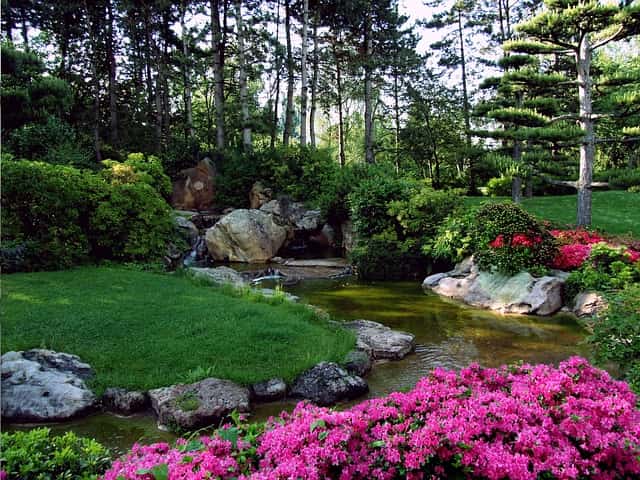Ideally, a landscape bed should achieve its primary purpose of being the aesthetic focal point in one’s yard. This is where flowering shrubs and other ornamental plants are strategically grown. But what if the bed no longer looks beautiful?
If this is the case, it’s time for you to learn how to clean up a messy landscaping bed.
1) Identify the Plants Currently in the Landscaping Bed
When you first made the bed, it only the shrubs you wanted there. However, new and uninvited plant growth could have occurred as time went on. Thus, you need to list the plants staying there now. Check for any pesky weeds or unwanted shrubs to remove — and don’t forget to include their root systems to avoid new growth. We recommend mowing the lawn and applying an edging beforehand to distinguish the beds that require immediate attention.
Likewise, it’s time to reevaluate any of your plants that haven’t properly grown. Have you provided them with enough water and fertilizer? Perhaps they have grown too much and need to be pruned and trimmed. Consider transplanting or just removing some of them if overcrowding seems to be the issue, which is typically the case for perennials. Lastly, take some time to determine which plants you want to remain and to introduce to your landscaping bed.
2) Practice Effective Weed Control
A landscaping bed filled with aggressive weeds is a nightmare.
Homeowners do make the mistake of having garden beds before identifying any active weed growth in their property. Eventually, they’d have to transplant their plants and exercise weed control through digging and herbicide applications. Take note that completely pulling out the weeds can take as long as one whole season.
Apart from manual removal and herbicides, you can also use black plastic sheeting. Placing this on the soil surface where the weeds are located will prevent them from getting enough sunlight, oxygen, and water. However, you must cut holes to allow your plants to go past the black plastic sheeting. The total efficacy of this method will be known once the growing season is over. Use a herbicide containing glyphosate to kill any remaining weeds in your landscaping bed.
Afterwards, you can gather the dead weed plants and place them in your compost heap during fall. By the next spring season, you can use this compost pile. During fall, you should cover the bed with landscape fabric to stop weeds from proliferating. Finally, metal edging that begins several inches below the ground can stop ryegrass from landing on the bed.
Here is a video of using the black plastic sheeting:
3) Organize the Plants and Complement the Area with Good Design
You’ve already removed the overgrown plants and the harmful weeds, but that isn’t enough. Fixing a messy landscaping bed means knowing how to utilize the appearance of each plant. Consider arranging the plants by height. The small ones can be at the front or the tallest ones can be in the corners. Put vibrant flowering plants at the centre.
Furthermore, your entire yard should look great. The bed can be accompanied by a well-design patio. Walkways will also diversity the area while preventing foot traffic in particular areas. There are many ways to do this, so you should definitely look for an article on backyard pathway ideas.
4) Consider Intensive Pruning
Sometimes, the usual manner of pruning isn’t enough. For some, it’s much better to perform the so-called rejuvenation pruning. Instead of just keeping the landscaping bed neat, this manner of pruning intends to drastically change how your plants will develop afterwards. Rejuvenation pruning is done early in spring before dormant buds break and shoots begin to sprout.
Still, utmost caution must be practised since not all plants can handle the process. This form of pruning basically entails removing one-third of the plant. If you want to test out intensive pruning, you can do it for three years. During this period, work on increasing the amount of pruned plant material little but little. The ideal result would be for your plants to have a reduced growth rate and to develop a more compact form.
In conclusion, cleaning up an unshapely landscaping bed can be tedious. Still, your efforts will pay off once the bed looks neat and beautiful once again. We hope that our guide proved useful to you. If you have any questions, do send us a message.


